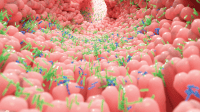Quality-improvement initiative: Classifying and documenting surgical wounds
Interprofessional collaboration promoted a successful initiative to improve wound classification.
By Jennifer Zinn, MSN, RN, CNS-BC, CNOR, and Vangela Swofford, BSN, RN, ASQ-CSSBB
For surgical patients, operative wound classification is crucial in predicting postoperative surgical site infections (SSIs) and associated risks. Information about a patient’s wound typically is collected by circulating registered nurses (RNs) and documented at the end of every surgical procedure.
Because of its predictive value, wound classification plays a valuable role in driving quality-improvement (QI) initiatives that incorporate risk-adjusted outcomes. Incorrect classification can lead to inaccurate outcome analyses and evaluation, possibly causing skewed results and invalid conclusions. For example, if a hospital consistently underclassifies surgical wounds, this may suggest it has a higher SSI incidence than expected based on patient risks. QI initiatives this hospital might implement to address the increased SSI rate may be invalid because the data points were skewed and didn’t truly reflect patient risk. For accurate documentation, both surgeons and circulating RNs must understand the definitions of each wound class and the potential impact of inaccurate wound-class assignment.
Our QI initiative
When our hospital participated in the American College of Surgeons’ National Surgical Quality Improvement Project (NSQIP), we realized an opportunity existed to improve wound-classification documentation, because our documentation didn’t accurately correspond with NSQIP definitions. Quality assurance (QA) staff and operative-services nursing leaders began to discuss this issue. Ultimately, the discussion involved surgeons and served as the foundation of our QI initiative on wound classification.
Before starting the initiative, we had to establish the prevalence of incorrect documentation. Through focused chart audits, we found a 5% to 32% discrepancy rate between the description of the detailed surgical procedure in the surgeon’s dictated operative note and documentation of wound-class assignment in the operative record. This averaged to an 18% discrepancy rate. We realized the goal of accurately capturing wound classification for each surgical procedure would require a collaborative effort by an interprofessional team of engaged nursing staff, surgeons, and QA staff. So we began our QI project by forming a team and mapping out a plan for success.
Recruiting a surgeon champion
When implementing a QI initiative that crosses professions, champions for each discipline involved should be identified and included. We quickly identified and recruited a surgeon champion to provide feedback and input from a physician perspective. He fully supported nursing’s role in this initiative and interceded as an advocate for the project, patients, and nurses when disconnects with other physicians occurred.
As our interprofessional team discussed inaccurate wound classification and its potential impact on outcomes and initiatives, we realized this issue was multifocal and would require education of the entire surgical team. We also established a vision and goal for our initiative:
- Vision: At the end of every surgical procedure, the circulating RN would verbally confirm the appropriate wound classification with the surgeon.
- Goal: No more than a 5% discrepancy between the dictated operative note and documentation in the operative record system-wide by the end of the fiscal year.
To reach our goal, we committed to randomly auditing 20% of surgical procedures for each specialty at operating room (OR) sites in our health system monthly and reporting this information to stakeholders every quarter.
Implementation tools and resources
We knew intensive education supported with tools and the resources to understand and assign wound classification would be essential. So we divided our efforts into two prongs: staff education and surgeon education.
Surgeon education prong
One of our first steps was engaging and providing detailed information to physicians and physician leaders about the intent, purpose, and goal of our initiative. After gaining support from the chief of surgery, our surgeon champion sent memos to all surgeons explaining the significance of wound classification, describing our QI project, and emphasizing the importance of their participation.
A laminated pocket guide attached to this memo presented the four wound classifications, their definitions, and examples of common procedures performed in the OR for each class. This gave physicians a consistent and clear definition of each wound class. The surgeon champion attended surgical services and infection-prevention meetings to continue the wound-classification dialogue with his peers. Posters describing our initiative were placed in all physician OR lounges.
Staff education prong
At an educational in-service, staff members at all seven OR sites received detailed definitions and descriptions of the four wound classes. To promote information retention, education occurred within the month before project implementation. An in-service also was provided to staff from other departments that deal with SSIs, such as infection prevention and QA. All staff, including circulating RNs and surgical technologists, received the same wound-classification pocket guide given to surgeons. In addition, the pocket guide was enlarged and posted as a laminated wall chart in all 54 ORs to ensure consistent wound-class definitions. (See Surgical wound classifications.)
Creating an audit tool
An audit tool that would capture and record data and run and produce meaningful reports to stakeholders was vital to our project’s success. Our QA analyst created a tool that can:
- randomly select 20% of procedures for each specialty for audit at all seven OR sites
• automatically populate critical data points for further drilldowns and feedback (such as patient name, medical record number, surgery date, or surgeon) or record the circulating RN’s documentation of wound classification - enter important data points for focused drilldowns and feedback, including wound classification from the dictated operative note, comment section for additional notes, and name of staff member completing the OR record
- run meaningful reports with valuable feedback to stakeholders that would promote continuing focus for improved outcomes. One type of report was the OR record with a wound-class mismatch between the surgeon’s dictated operative note and the circulating RN’s documentation. Another was the wound-classification audit summary, which provided system-wide, site, and specialty data.
Continuing efforts
Our efforts to improve wound-classification documentation didn’t stop with implementation of this QI initiative. We’ve maintained a continuous effort to identify and improve the tools and resources clinicians need to succeed. Nursing leaders sought solutions from staff on how to correct deficiencies. After the project launched, staff nurses were asked to give their perspectives on how it was progressing. Their feedback, which has been pivotal to our success, provided two crucial pieces of information:
- The nurses didn’t believe all surgeons supported this effort. Some were frustrated by pushback from surgeons when trying to engage them in a wound-classification conversation at the end of a procedure. So our surgeon champion met with his surgeon peers and asked each one, “Are circulating nurses verifying wound classification with you at the end of every procedure?” To our nurses’ credit, the surgeons’ response was “yes.” When surgeons admitted they had questions of their own, our surgeon champion addressed their questions and concerns directly.
- Nurses expressed uncertainty as to how to lead a conversation with surgeons about wound classification, and requested a script or set of leading questions to use at the end of every procedure. To guide the discussion, an algorithm with talking points was created. (See Wound-classification algorithm.)
Nurses also received additional educational in-services on wound classification. Some involved a Jeopardy-like game, critical-thinking activities, Q & A worksheets, and quarterly questions. (See Quarterly questions below.)
Quarterly questions
Quarterly questions allow nurses to participate in a self-assessment exercise as they think about their practice critically. Each quarter, a new question is distributed. Questions come in various formats, from those requiring short answers to crossword puzzles and riddles. Staff are encouraged to discuss the questions with their peers.
In each case, the operating room (OR) record showed a different wound classification than the surgeon’s dictated operative note indicated. The nurse’s wound-classification documentation appears next to each case number. Read each case through the dictated operative note. Before reading the section titled “Correct wound classification and rationale,” provide your own classification and rationale based on what you’ve learned in this article. Then read that section to see if you were right.
Case #1: OR record indicated a class II wound.
Preoperative diagnosis: Acute appendicitis
Postoperative diagnosis:
1. Acute appendicitis
2. Right ovarian cyst measuring 5 cm
Dictated operative note: The patient is a female found to have acute appendicitis on workup tonight in the emergency department (ED) after being sent by Dr. D for abdominal pain…The stump was hemostatic. Appendage was placed in an EndoCatch bag and extracted.
Correct wound classification and rationale: Class III
Appendectomy for acute appendicitis is a class III wound related to acute nonpurulent inflammation. Key clues from the dictated operative note: postoperative diagnosis of acute appendicitis and the patient’s ED admission.
Case #2: OR record indicated a class II wound.
Preoperative diagnosis: Perforated sigmoid colon
Postoperative diagnosis: Perforated sigmoid colon
Dictated operative note: The correct patient and procedure were verified. A midline incision in the lower abdomen just skirting the umbilicus was used, and dissection was carried down through subcutaneous tissue and midline fascia…There was a lot of edema of the anterior abdominal wall. The peritoneum was entered under direct vision. There was grossly feculent, foul-smelling fluid free in the peritoneal cavity, which was suctioned. There was marked diffuse peritonitis. Small bowel loops were distended and matted with fibrinous exudates. The dissection was carefully carried down in the pelvis with blunt dissection, dividing inflammatory adhesions. Several large pockets of grossly purulent and feculent material were entered and broken up; these were cultured. All loculations were completely broken up, suctioned, and irrigated.
Correct wound classification and rationale: Class IV
Perforated viscera and stool in the wound indicate a class IV wound related to perforated viscera/ stool, which suggest the organisms causing potential infection were present in the operative field before surgery. Key clues from the dictated operative note: grossly feculent, foul-smelling fluid, marked diffuse peritonitis, grossly purulent and feculent material, cultures, and postoperative diagnosis of perforated sigmoid colon.
Case #3: OR record indicated a class II wound.
Preoperative diagnosis: Tonsillitis
Postoperative diagnosis: Tonsillitis
Dictated operative note: The patient was placed in the supine position and, under general endotracheal anesthesia, the tonsils were removed using blunt and Bovie electrocoagulation dissection. They were exudative. There was a considerable amount of purulent material, and the patient was placed on antibiotics again (I.V.) as well as Decadron. Once this was completed, the stomach was suctioned and the tonsillar beds were clear of bleeding.
Correct wound classification and rationale: Class IV
Purulent material in the wound suggests the organisms causing a potential infection were present in the operative field before surgery. Key clues from the dictated operative note: exudate present, considerable amount of purulent material, the need for antibiotics, and postoperative diagnosis of tonsillitis.
Project outcome
Our initiative to accurately capture the correct wound classification met the goal of a discrepancy rate of 5% or less for fiscal year (FY) 2009—a rate we maintained for FY 2010 and 2011. Some of our OR sites exceeded that goal, demonstrating a 0% discrepancy rate. (See System-wide wound-classification discrepancy rate, 2008-2011.)
During this time, almost 14,000 dictated operative notes were audited. Other successful project outcomes included enhanced communication among OR team members, national recognition through podium presentations at national conferences, and selection as one of the five best practices by the American College of Surgeons’ NSQIP in 2011.
Our project demonstrated the power of interprofessional teamwork, which strength¬ened collegial relationships among staff. We encourage all clinicians to engage in important conversations with peers and ask crucial questions that help transform practices in your setting.
Selected references
Berard F, Gandon J. Postoperative wound infections: the influence of ultraviolet irradiation of the operating room and of various other factors. Ann Surg. 1964;160(suppl 2):1-192.
Burlingame BL. OR fire extinguishers; classifying wounds and minor procedures; antibiotic infusion time; mopping after minor procedures. AORN J. 2006;83(6):1384-93.
Devaney L, Rowell KS. Improving surgical wound classification—why it matters. AORN J. 2004;80(2):208-9, 212-23.
Nichols RL. Classification of the surgical wound: a time for reassessment and simplification. Infect Control Hosp Epidemiol. 1993;14(5):253-4.
Paige J. Tissue handling. In: Rothrock JC, Seifert PC, eds. Assisting in Surgery: Patient-Centered Care. Denver, CO: Competency & Credentialing Institute;2009:74-106.
Zinn JL. Surgical wound classification: communication is needed for accuracy. AORN J. 2012;95(2):274-8.
Zinn JL, Swofford V. What is wound classification? Speech presented at: 57th Annual AORN Congress; March 18, 2010; Denver, CO.
Zinn JL, Swofford V. Wound classification: Transforming surgical quality, one procedure at a time. Speech presented at: ANCC Magnet Conference; October 14, 2012; Los Angeles, CA.
The authors work at Cone Health in Greensboro, North Carolina. Jennifer Zinn is a clinical nurse specialist in operative services. Vangela Swofford is a quality-improvement facilitator.
Surgical wound classificationsThe classification system shown here was developed to help clinicians identify and describe the degree of bacterial contamination of surgical wounds at the time of surgery. It was developed initially by the American College of Surgeons and adapted in 1985 by the Centers for Disease Control and Prevention. Class I: Clean
Class II: Clean/contaminatedOperative wound that enters the respiratory, GI, genital, or urinary tract under controlled conditions without unusual contamination when no infection or major break in technique has occurred
Class III: Contaminated
Class IV: Dirty/infected
|
Wound-classification algorithmTwo versions of an algorithm were created for the quality-improvement project on wound classification at Cone Health in North Carolina. The one currently used (shown here) arose from continued surgeon engagement and emphasizes the importance of interprofessional collaboration. Wound classification has been incorporated into our surgical checklist as a trigger to initiate this conversation between staff and surgeons. System-wide wound-classification discrepancy rate, 2008-2011Before the quality improvement (QI) project, the discrepancy rate between the surgeon’s dictated operative note and documentation of wound-class assignment in the operative record ranged from 5% to 32%. This averaged to an 18% discrepancy rate. After the QI project was implemented, we met the goal of a discrepancy rate of 5% or less (fiscal years 2009, 2010, and 2011). Some of our OR sites exceeded that goal and consistently demonstrated a 0% discrepancy rate. |


















